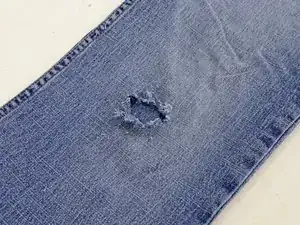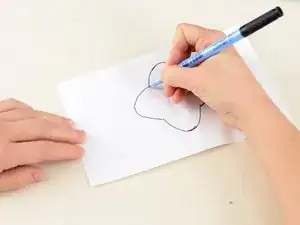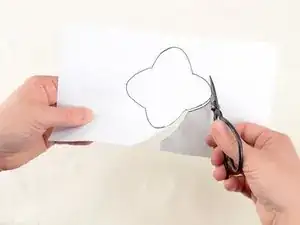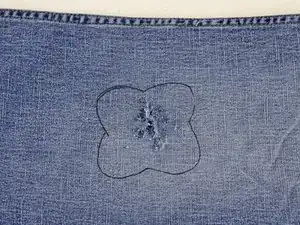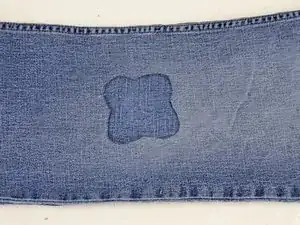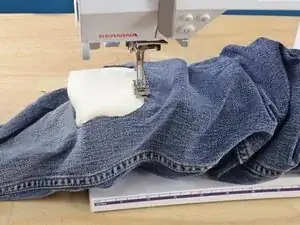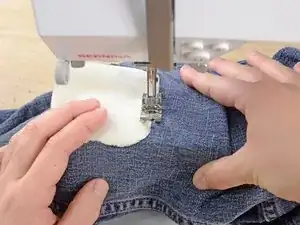Introduction
Patch your jeans with a reverse applique. This technique is great for holes that have a large chunk of cloth missing. You can cut any shape and use any color fabric for the patch, so long as it is heavy-weight fabric.
For replacement parts or further assistance, contact Patagonia Customer Service.
Tools
-
-
Examine the damage. Clip any long threads, and remove any debris from the hole.
-
Measure the damaged area.
-
In our case it looks to be 2" by 2".
-
-
-
Draw any the shape you'd like your patch to be on a piece of paper. Be sure your design is at least 1/8" larger than the damaged area.
-
Cut out your design.
-
-
-
Lay the cutout of your design over the hole in the jeans to make sure that it is the correct size and looks how you want it to.
-
-
-
Align the edge of the patch with the center of the pressor foot.
-
Be sure that the patch is laying flat.
-
Lower the pressor foot.
-
Begin sewing the zig-zag stitch, following the edge of the hole so that the zig-zag stitch covers the area where the two fabrics meet.
-
-
-
Sew all the way around the patch.
-
Overlap the stitching at the end with the first two or three stitches.
-
-
-
Lift the pressor foot and needle.
-
Slide the pant leg off of the arm of the sewing machine.
-
Clip any threads, and admire your work.
-
2 comments
To keep the pattern from entirely fraying or catching on things, it may also help to flip the pants right-side-out and sew again around the pattern edge with the zigzag or a flat stitch.
Alisa -
worked! i’ve been wearing these torn pants for years. thanks so much!
